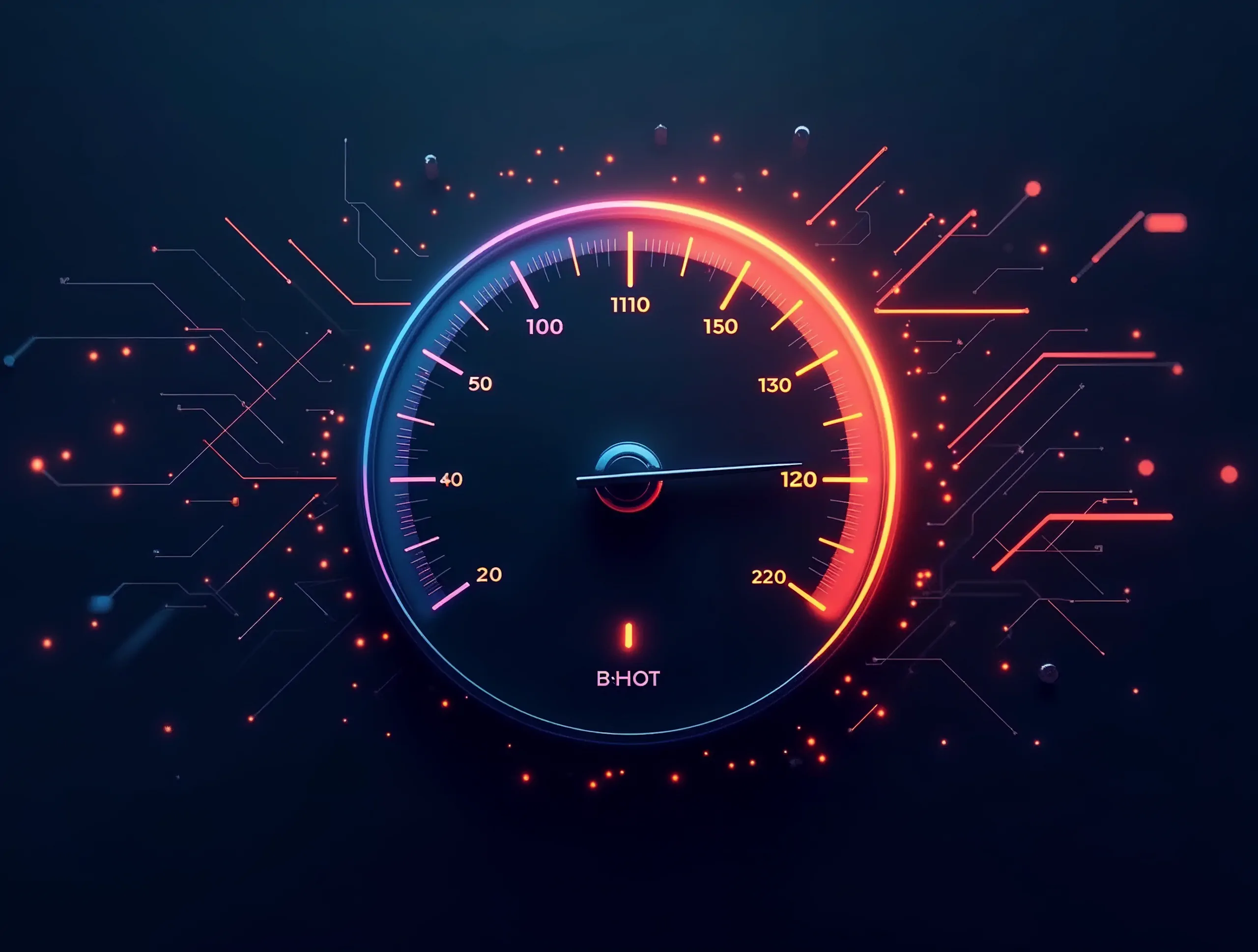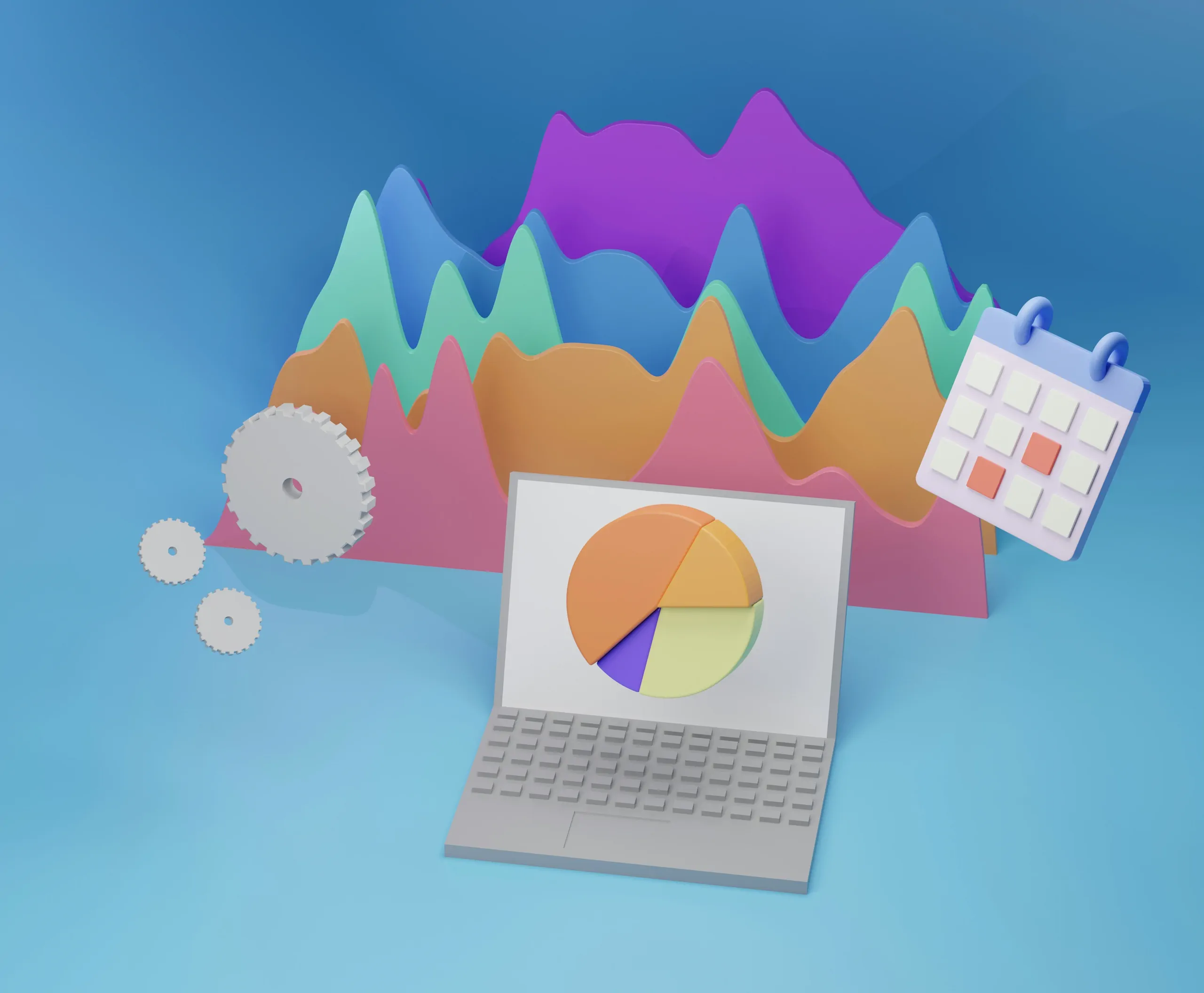Website Speed Optimization Guide: Make Your Site Fast

10 min read
Most websites don't make money.
The data shows why: 40% of visitors leave if a site takes more than 3 seconds to load.
Here's how to fix that.
Image Optimization
The average website's images are 2-3x larger than they need to be. Here's what actually moves the needle:
Convert to WebP
- Reduces file size by 30% compared to JPEG
- Zero visible quality loss
- Supported by all major browsers
- Instant performance boost
Recommended WebP Conversion Tools
Ezgif
Ezgif offers a user-friendly online platform that converts multiple formats to WebP format. It includes basic editing features along with simple resize and crop options, making it perfect for quick single image conversions.
FreeConvert
FreeConvert provides batch processing capabilities with adjustable quality settings and compression level control. It preserves image metadata while being ideal for optimizing multiple images simultaneously.
CloudConvert
CloudConvert offers enterprise-grade conversion capabilities with extensive format support, resolution customization options, and quality preservation controls. It includes API access for automation, making it ideal for high-volume image processing needs.
Pro Tip: Test different quality settings between 75-85%. This range typically gives you the optimal balance between file size reduction and visual quality.
Implement Real Lazy Loading
Q: What is lazy loading and why do I need it?
Lazy loading means your website only loads images when visitors are about to see them, instead of loading everything at once. Think about it:
The Problem:
When someone lands on your website, it loads every single image - even ones they can't see yet. Our data shows 75% of website images are "below the fold" (the part of your site visitors have to scroll to see).
How Lazy Loading Fixes This:
- Only loads images when visitors scroll near them
- Prioritizes content visitors see first
- Automatically delays non-critical images
- Works on all devices and browsers
The Results:
- 50% faster initial page load
- Lower hosting bills (you're serving less data)
- Better Core Web Vitals scores (Google loves this)
- More engaged visitors (they don't leave before your page loads)
Implementation:
Modern browsers support lazy loading natively. Just add loading="lazy" to your image tags. For older browsers, we implement a JavaScript solution that delivers the same benefits.
A typical 3MB page with 20 images drops to under 1MB on initial load.
That's the difference between a visitor staying or leaving.
Image Size Optimization
Q: Why does image size optimization matter and how do I do it?
The Problem:
Most websites serve the same huge images to every device. When your 2000px-wide header image loads on a mobile phone, you're wasting data and killing load time. Real data from our audits shows 82% of websites serve images at least twice the size needed.
What Size Optimization Really Means:
- Creating different image sizes for different screens
- Compressing without visible quality loss
- Setting the right dimensions in your code
- Handling high-DPI (retina) displays properly
The Results We Track:
- 40% faster page loads
- 60% reduction in image file sizes
- Better mobile performance scores
- Reduced bandwidth costs
How to Get These Results:
1. Size images based on their display size:
- Desktop: Maximum width needed
- Tablet: Usually 1024px wide
- Mobile: Usually 640px wide
2. Use responsive images in your code:
<img
src="small.jpg"
srcset="large.jpg 1920w, medium.jpg 1024w, small.jpg 640w"
sizes="(max-width: 640px) 100vw, (max-width: 1024px) 100vw, 1920px"
alt="Description"
>
3. Automate the process:
- Use image optimization tools
- Set up automated workflows
- Let your CMS handle variations
- Stop manual image editing
Want to check if your images are properly sized? Run your site through Google PageSpeed Insights. If you see "properly size images" as a suggestion, you've got work to do.
Technical Optimization
Browser Caching
Q: What is browser caching and how does it make my site faster?
The Basics:
Browser caching is like giving your visitors' browsers a memory. Instead of downloading your logo, fonts, and other assets every time someone visits your site, their browser saves these files locally.
How It Works:
- First visit: Browser downloads everything
- Later visits: Browser uses saved files
- Result: Pages load instantly
The Numbers That Matter:
- 70% faster loads for return visitors
- 50% less strain on your server
- 30% lower bounce rates
- Better mobile experience
Setting It Up Right:
We configure your server to tell browsers:
- Which files to save
- How long to keep them
- When to check for updates
- What to prioritize
Code Optimization
Q: What makes code "clean" and why should I care?
The Reality:
Most websites carry unnecessary code that slows them down. We regularly find:
- Unused CSS styles
- Multiple JavaScript versions
- Duplicate code
- Uncompressed files
What Clean Code Means:
- Remove what you don't use
- Combine similar files
- Compress everything
- Organize efficiently
The Impact:
- 25% faster load times
- Better search rankings
- Smoother user experience
- Reduced hosting bills
Resource Loading
Q: What is resource loading and how does it affect speed?
The Concept:
Your website has dozens of files - scripts, styles, images. Resource loading determines when and how these load.
Poor Loading Looks Like:
- Everything loads at once
- Big files block important content
- Scripts load before content
- Visitors wait for unnecessary files
Smart Loading Means:
- Load critical content first
- Delay non-essential scripts
- Load styles before scripts
- Prioritize visible content
Measurable Results:
- 2.5x faster interaction time
- 60% better Core Web Vitals
- Higher conversion rates
- Improved mobile scores
Implementation Example:
<!-- Load critical CSS first -->
<link rel="stylesheet" href="critical.css">
<!-- Defer non-critical scripts -->
<script defer src="non-critical.js"></script>
<!-- Preload important assets -->
<link rel="preload" href="hero-image.webp">
Want to see how your site's technical optimization measures up? Run a quick audit and we'll show you exactly what's slowing things down.
Content Delivery
 A CDN distributes your content to servers worldwide, dramatically reducing load times for global visitors.
A CDN distributes your content to servers worldwide, dramatically reducing load times for global visitors.
Q: What's a CDN and why do websites need one?
The Problem:
Your website lives on a server in one location. When someone visits from across the world, your content has to travel thousands of miles - creating delays.
How a CDN Solves This:
A Content Delivery Network (CDN) copies your website to servers worldwide. When someone visits:
- The CDN finds their location
- Serves content from the nearest server
- Cuts travel time dramatically
- Handles traffic spikes automatically
When You Need a CDN:
- Your audience is international
- You have high-resolution images
- You get traffic spikes
- Speed is critical for conversions
Q: How does website compression work?
The Basics:
Compression shrinks your website files before sending them to visitors. Their browsers automatically unpack these files - like unzipping a compressed folder.
What Gets Compressed:
- HTML files
- CSS stylesheets
- JavaScript files
- Text-based content
The Impact:
- 70% smaller file sizes
- Pages load in milliseconds
- Lower hosting costs
- Better mobile experience
Implementation Options:
- Server-level compression:
# Apache configuration
AddOutputFilterByType DEFLATE text/html text/plain text/xml text/css text/javascript application/javascript
- Browser-level compression:
<link rel="preload" href="hero-image.webp" as="image" type="image/webp">
- Third-party tools:
Infrastructure
Q: How much does hosting really matter for website speed?
The Truth About Cheap Hosting
Most businesses start with budget hosting that costs $5-10 monthly. The hidden cost? Slow load times that drive away customers.
What Quality Hosting Delivers:
- 3x faster server response
- 99.9% guaranteed uptime
- Handles traffic spikes
- Prevents security issues
When to Upgrade Your Hosting:
- Your traffic is growing
- Speed matters for sales
- You're running complex plugins
- You need better security
Real-World Impact:
Budget hosting typically means sharing server resources with hundreds of other websites. Our clients who upgrade see:
- 2-second reduction in load times
- Zero downtime during traffic spikes
- Better search rankings
- Higher conversion rates
Q: What is database optimization and why does it affect speed?
The Problem:
Your website's database is like a filing cabinet. Over time, it gets messy and slow. Signs of database problems:
- Pages load slowly
- Search functions lag
- Admin panel delays
- Random errors
What Database Optimization Fixes:
- Removes unnecessary data
- Organizes information efficiently
- Speeds up data retrieval
- Reduces server strain
Measurable Improvements:
- 40% faster page generation
- Reduced server resources
- More stable performance
- Better user experience
Q: How do I know if my website is actually fast enough?
Key Speed Metrics Explained:
Time to First Byte (TTFB)
- What it is: How fast your server responds
- Good score: Under 200ms
- Impact: Affects all other speed metrics
- How to improve: Better hosting, caching
First Contentful Paint (FCP)
- What it is: When content first appears
- Good score: Under 1.8 seconds
- Impact: User's first impression
- How to improve: Optimize critical rendering path
Largest Contentful Paint (LCP)
- What it is: When main content loads
- Good score: Under 2.5 seconds
- Impact: Perceived page speed
- How to improve: Image optimization, server response
Cumulative Layout Shift (CLS)
- What it is: Visual stability
- Good score: Under 0.1
- Impact: User experience
- How to improve: Set image/ad dimensions
How to Track These:
Google PageSpeed Insights
- Free testing
- Mobile and desktop scores
- Specific recommendations
Google Analytics
- Real user data
- Traffic impact
- Conversion correlation
Google Search Console
- Core Web Vitals reports
- Mobile usability
- Search performance impact
Want to know exactly where your site stands? Our performance audit breaks down each metric and shows you specific fixes that will make the biggest impact.
The Bottom Line
Every second your website takes to load costs you money. Here's what our clients' data proves:
Impact on Business:
- 1-second delay = 7% drop in conversions
- 3-second load time = 40% abandonment rate
- 5-second load time = 90% bounce rate
When You Optimize Speed:
- Conversion rates increase 25%
- Search rankings improve
- Ad costs decrease
- Customer satisfaction jumps
What This Means for You:
Every day you wait to optimize your site speed is a day you're leaving money on the table. The question isn't whether to make your site faster - it's how much revenue you're willing to lose before you do.
Ready to see how much faster your site could be? Get a free performance audit that shows exactly what's slowing you down and how to fix it.
Further Reading
Understanding website speed optimization is just the first step in creating a high-performing website.
While optimizing your site's speed creates the foundation, you'll want to explore how this technical improvement translates into business results through our guide on improving website conversion rates.
For a deeper dive into the smaller wins that add up to major improvements, our article on mastering micro-conversions shows you how to optimize every interaction on your faster website.
A faster website is part of a larger digital strategy that drives business growth.
Before implementing speed optimizations, you might want to check out our business website assessment guide to identify all areas needing improvement.
And if you're planning a complete overhaul, our detailed breakdown in the truth about website redesign costs will help you budget for both speed optimizations and other critical improvements that drive revenue.






